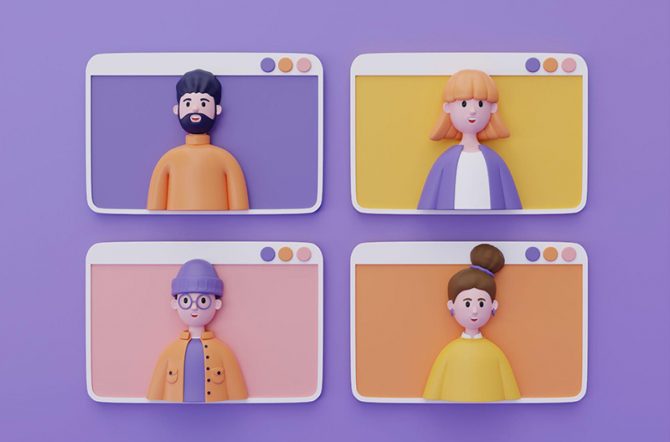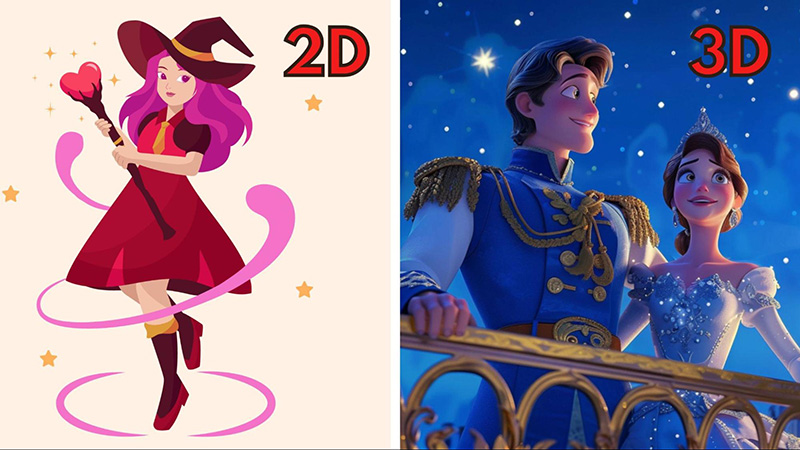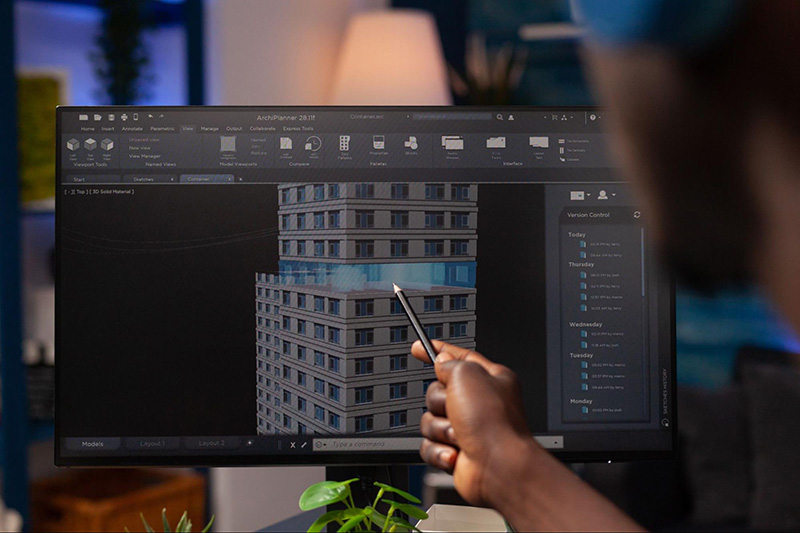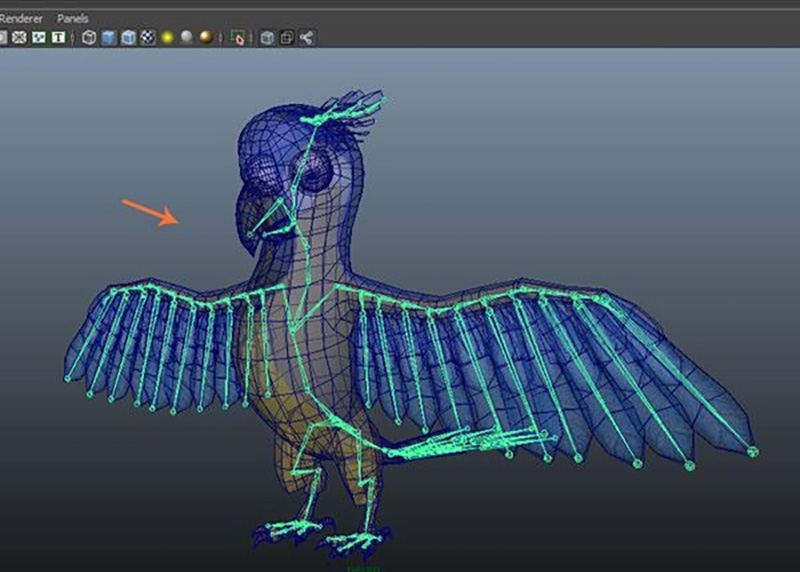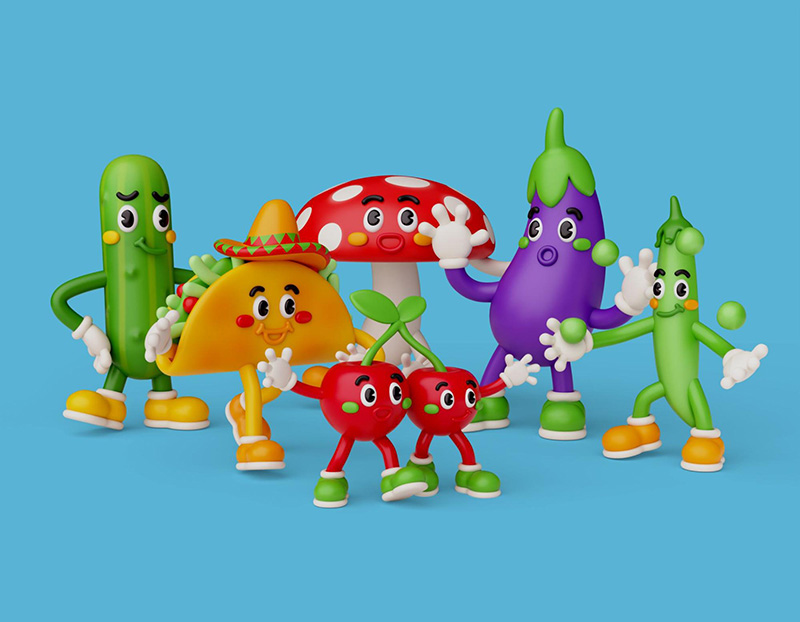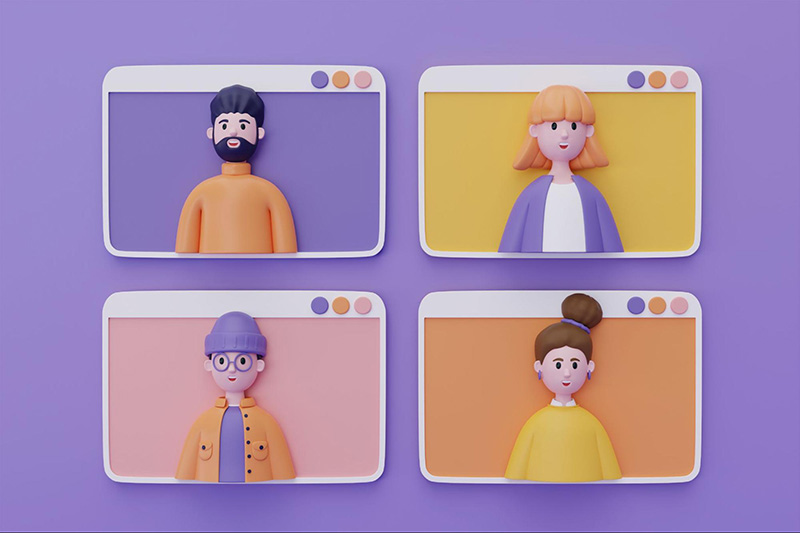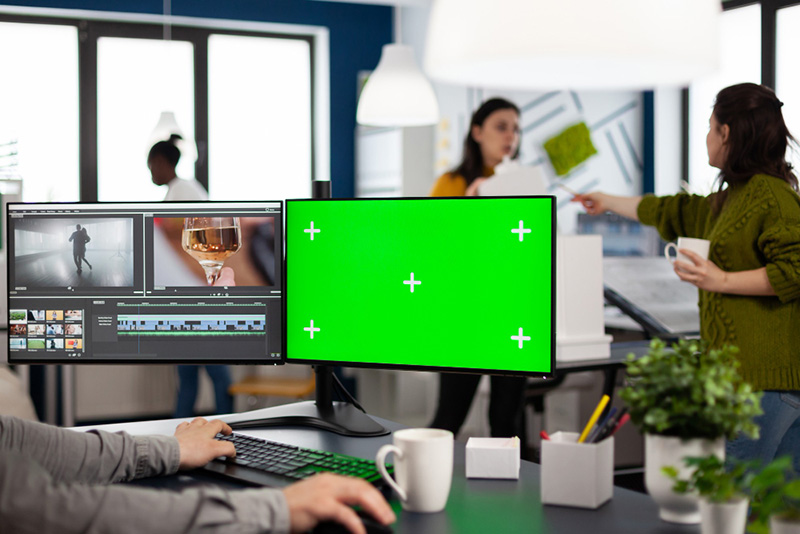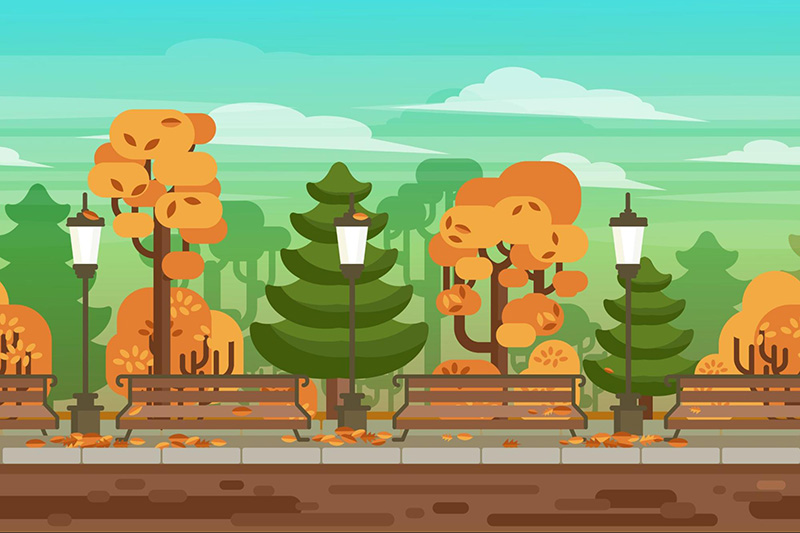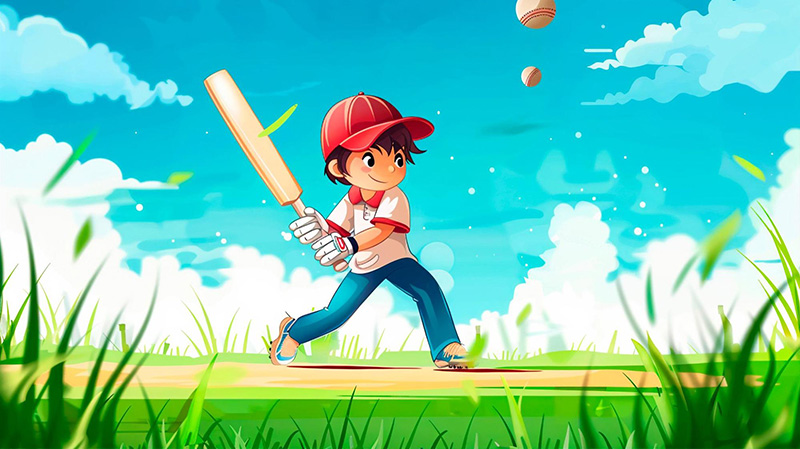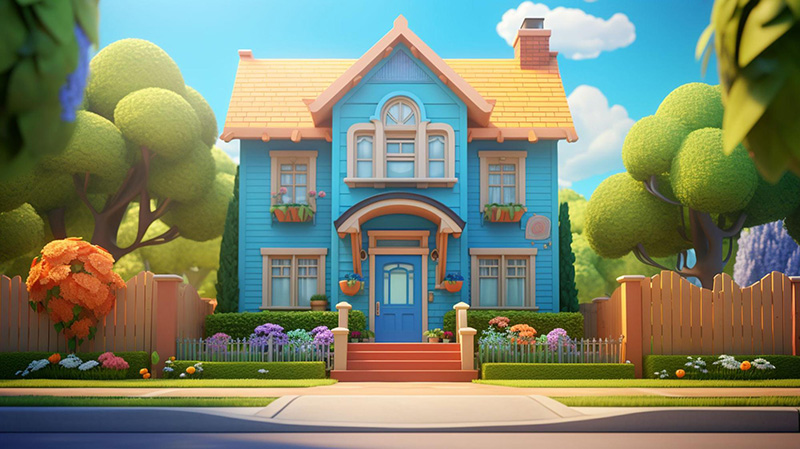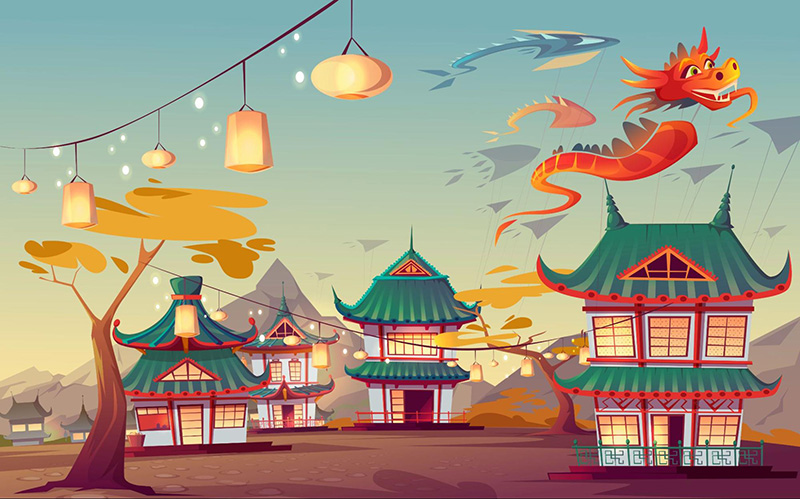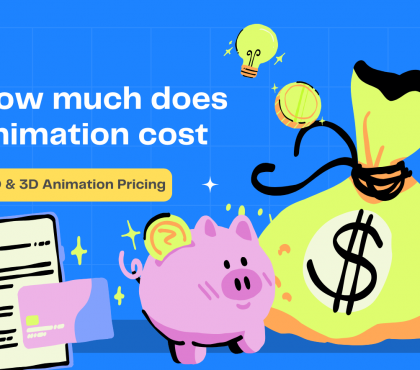The question “Is 3D animation easier than 2D animation” often raises fascinating discussions. It ignites differing opinions among animators, artists, and animation enthusiasts. However, each form of animation presents its own challenges and advantages. In this article, we’ve listed some factors that make 3D animation more difficult to master.
1. Technical Complexity
While 2D animation focuses more on drawing skills and less on complex computations, 3D animation is computationally intensive. In 3D, animators work with intricate models, lighting, and textures, creating a detailed, lifelike environment. As a result, they have to master software for rigging, rendering, and simulating physics, which can be pretty challenging.
2. Modeling and Rigging
In 3D, you have to use software to create a three-dimensional representation of a character, object, or environment. In contrast, 2D involves the creation of characters and environments through drawing.
Rigging is another fundamental step in 3D animation, which requires creating a skeleton that moves naturally in all directions. This step is less common in 2D animation but can be used for more complex movements and transformations.
3. Movement and Physics
In 2D animation, artists draw each frame by hand, allowing for creativity in how characters and objects move. However, in 3D animation, everything exists in a digital three-dimensional space, which means movement must be realistic and consistent with the laws of physics.
For instance, when a character jumps, the animator must account for gravity, momentum, and the impact of landing. These elements require complex calculations and meticulous adjustments to ensure everything looks natural.
4. Camera and Lighting
In 3D animation, the camera can be moved and positioned in any direction within the 3D space, which requires an understanding of 3D modeling and spatial navigation. Plus, when it comes to lighting, animators must consider the position, intensity, and color of multiple light sources, as well as how they interact with the materials and textures of the 3D objects.
These two factors demand a deeper understanding of real-world principles, making it a steeper learning curve compared to 2D.
5. Skill Set and Learning Curve
3D animation often presents a steeper learning curve and requires a broader skill set compared to 2D animation. As 3D animation software is often more complex and feature-rich, animators need to learn various tools and techniques. Additionally, it’s essential to grasp the principles of physics to create realistic movements. The skill set required is also more demanding, including modeling, rigging, texturing, lighting, and rendering.
6. Post-Production
The post-production phase in 3D involves intricate processes like rendering, compositing, and adding special effects. Rendering in 3D can be particularly time-consuming, as it involves converting 3D models into 2D images frame by frame. This phase alone requires significant computing power and time.
Additionally, compositing in 3D animation often includes integrating multiple layers, such as shadows, reflections, and particle effects, to create a cohesive and realistic scene. When comparing live action vs animation, 3D animation often requires more complex technical processes, especially in terms of computer techniques. However, 2D animation has its own set of challenges, relying heavily on skills in drawing and creating fluid motion frame by frame.
Read more:
- 7 Reasons Why 3D Animation is Better Than 2D Animation
- 9 Reasons Why Animation is so Expensive: 8 Tips to Save in 2025
First time managing animation project at large scale?
Check out how F.Learning Studio controls the production process of huge scope project through our case study
2D Animation Is Harder Than 3D Animation in Some Aspects
1. Artistic Skill and Drawing Ability
2D animation often demands a higher level of artistic skill and drawing ability. In 2D animation, each frame is meticulously drawn by hand or digitally. Animators need good drawing skills and knowledge of anatomy, perspective, and motion to make characters move smoothly and expressively. Plus, each frame must seamlessly blend into the next, which can be quite labor-intensive.
2. The Fluidity of Motion
To generate seamless transitions between actions, animators must craft each frame manually or use digital software. This process, called “in-betweening,” requires a good understanding of timing, spacing, and animation principles to make the motion smooth. It demands detailed planning and a lot of patience, as even a small mistake can disrupt the flow and make the animation look choppy. When comparing animation vs live action, this meticulous frame-by-frame work is unique to animation, as live action relies more on real-time motion capture rather than creating motion from scratch.
3. Expressiveness
2D animation relies heavily on drawing skills to convey emotions and actions effectively. This means that every nuance, from a subtle eyebrow, raise to a dramatic gesture, has to be meticulously planned and executed.
Moreover, 2D animators don’t have the luxury of manipulating a 3D model that can be adjusted from different angles or reused. Instead, they need to redraw characters in various poses and expressions for every frame, making it tougher.
2D Animation vs 3D Animation: Which One You Should Choose?
1. Personal Interest and Artistic Style
Your personal interest and artistic style play a crucial role in choosing between 2D and 3D animation. So ask yourself: whether you love drawing and enjoy creating characters and scenes by hand or prefer digital art, modeling, and working with complex software.
2. Industry Trends and Opportunities
Currently, 3D animation dominates in fields like film, video games, and advertising due to its ability to create lifelike visuals and immersive experiences. However, 2D animation remains strong in areas such as TV shows, educational content, and indie game development.
3. Future Prospects
3D animation continues to grow with advancements in technology, virtual reality, and augmented reality, expanding its applications and demand. Meanwhile, 2D animation is expected to flourish in short-form content for social media and streaming platforms. Because attention spans continue to shrink, there is an increasing need for small, easily digestible animated content.
2D and 3D animations have their own advantages and difficulties. Every artist should have his or her own drawing pen so that you can draw more inspiration. If you are a professional 2D artist, you can have your own Custom Pens. You can print your favorite animation image on the pen, or other representative logos, which is also convenient to carry with you.
Conclusion
Well done! You’ve acquired an extensive understanding of animation through this article. We hope that you can find the answer to the question “Is 3D animation easier than 2D” by yourself. If you plan to go further by investing in animation for your next project, F. Learning Studio can be your perfect match. With 8 years of experience in creating high-quality animation, we can help you impress your audience with animation.
Let’s chat and create something stunning together.
- Email: [email protected]
- Fanpage: https://www.facebook.com/f.learningstudio
- LinkedIn: https://www.linkedin.com/company/f-learning-studio/

FAQs
1. Should I Learn 2D or 3D Animation First?
If you have a strong passion for drawing and enjoy creating art by hand, starting with 2D animation might be more satisfying. On the other hand, if you’re more interested in digital art, modeling, and working with sophisticated software, you should jump into 3D animation
2. Is 2D Animation Cheaper Than 3D Animation?
Generally, 2D animation can be cheaper than 3D animation as it’s quicker to produce and often requires fewer resources and less expensive software.
3. Is 3D Animation Better than 2D Animation?
Neither 3D nor 2D animation is inherently better; it depends on the project’s goals and the story you’re trying to tell. 3D animation is favored for video games, films, and commercials that require lifelike visuals. 2D animation, however, is the best choice for cartoons, animated shorts, and educational content.
Read more:
- Is 3D Animation Cheaper Than 2D: A Detailed Cost Breakdown
- 10 Best 2D & 3D Animation Services for 2025 Success

Sean Bui, the founder and creative director of F.Learning Studio, is a respected leader in the e-learning and multimedia production industry. With over 10 years of experience, he has dedicated his career to helping organizations create engaging and impactful learning experiences.
Under his leadership, F.Learning Studio has grown into a trusted partner for organizations in the education, healthcare, and corporate training sectors, producing over 2,000 minutes of educational animation.

